what to do about a wire under a floor joist
Running the Wires for Structured Wiring
How to run the wires
Hither are some sample pictures of what your wiring should look like for a new construction.
Click on any prototype to see a larger version.
| When installing an electric box, drill a pigsty in the flooring between the studs on the same side as the electrical box. Staple down the wire right above the pigsty and right under the electrical box. Drill multiple holes if there are many wires. Just exist sure not to drill through the wires from the previous pigsty. | |
|---|---|
| An extra staple would exist required if this box was higher off the floor. Both the box and the hole in the floor are insulated with expanding foam. | |
| The wire is coiled in the box so it will non interfere with the drywall which will be installed next. | |
| The architect will ordinarily run electric wires effectually the outside of the house. Run your wires internally and abroad from any power wire. Run the wires along the joist. Any wires that run nether a joist perpendicular to information technology could cause issues later on if you finish your basement. It can interfere when installing a ceiling. | |
| When your wires are near power, it should be perpendicular to the power wire. | |
| When you do demand to run wires near a duct or plumbing, be sure to leave some slack so that the other installers can motility your wire if necessary. Don't presume that you know exactly where the duct will be run. | |
| Slack was left in this wire to make room for the ductwork that was to be installed subsequently. This shows how of import information technology is to know where the ductwork will exist installed. | |
| This wiring is for a flat console Television higher up a fireplace. There is an electrical outlet and a separate outlet for the audio/video. | |
| From this angle, you tin can see the sound/video wires run from above the TV to an area side by side to the fireplace where the stereo components will be located at that place. Possibly there will exist built-in bookshelves on either side of the fireplace to hold the components. | |
| Run all of the wires to a central location in the basement/wiring closet. I run mine near the electrical box, but a couple of feet away from information technology. Leave plenty wire so that you can move your wiring console a couple anxiety in whatever direction. Loop the wire and utilize wire ties to keep it together so it doesn't rest on the floor. | |
How to avoid ductwork, electrical, plumbing...
As you are installing your wires it is important to be able to identify what the other installers are doing and where they are doing it. Usually, the HVAC installers volition beginning rough out their ductwork so that the plumbers, electricians... will know where the ducts volition be. The ducts wont actually exist installed, but the location and shape of certain holes should tell you everything you need to know.
Click on whatever epitome to meet a larger version.
| This is a hole for your standard floor vent. Floor vents are usually at the border of the dwelling house and are placed under windows. There will exist a duct running from this hole to the furnace. | |
|---|---|
| Sometimes, the builders will take the rectangular slice of floor that was removed for the vent and boom it above the hole on an angle. This is done so that no one accidentally steps in the hole and breaks an ankle. These holes are no different than any other floor vent. | |
| Another way of covering a floor vent. | |
| This could be either a return or a vent. If it is in a bathroom, then this will be a vent. Returns should be placed high on the wall, but if that is not possible (in a room that is all windows), this could be a return. | |
| Many times at that place is no room in a kitchen to place a vent, so it is installed under the kitchen sink. Earlier the cabinetry is installed, this will just be a hole in the floor with a piece of wood covering the opening. | |
| You can identify a vent in a floor from below the floor. The HVAC coiffure will offset by installing this piece of ductwork at the hole. | |
| Ducts are run vertically at the within of the abode, so the next footstep is to run the ductwork horizontally between the floor joists to an interior wall. | |
| In this example, yous can run across the duct come from the first floor basement, through an interior wall, and and then upward through the 2nd floor at the exterior of the dwelling house. | |
| Hither, the duct piece of work has only been roughed out, only you lot can tell from the location of the holes were the duct work volition exist. Then, you tin can go along your wires away from it. The second epitome on the right has a line indicating where the ductwork will exist. | |
| If you run into a sheet metal frame like this at the top of a wall, and then it is a return. This metal indicates to the drywallers where to cut the pigsty for the return, and the metal will also agree the screws for the vent cover. | |
| This is a different style of return frame that has four sides instead of 3. | |
| This is what the return will look like when complete. | |
| Below the render will be a pigsty in the flooring. This will be on an interior wall. If at that place is a metal frame at the top of the wall, then that tells you this is a return and not a second flooring vent. | |
| Sometimes the builder will frame out the bottom of the wall in metal. This can prevent drywall cracks if someone kicks the wall. | |
| Pictures of 2 dissimilar returns that prove the hole in the floor and the frame for the return. | |
| There are two adjacent holes in the interior of the home. One of them already has a roughed in duct. Either the builder didn't finish, or the correct hole is a second floor duct, and the left hole is a return. | |
| Here are some other items y'all should exist familiar with. The left tube is the flue. This volition be straight in a higher place the water heater or furnace and tin get very hot. The flue will run straight up through the roof. Next to that is a pre-installed radon tube in case radon gases commencement building up in the basement. This option is not found in most homes. The right most tube is a futurity-tube upgrade. The architect tin install this tube and then that the homeowner tin run wires from the basement to the attic at a afterwards time. | |
| This is a closer view of the future tube. Each stop of the time to come tube is capped so that information technology doesn't act every bit a chimney in example of a burn down. | |
| This is what a central vacuum organisation looks like before the drywall is installed. | |
| Any holes drilled through floors or any electrical boxes on exterior walls should be insulated with caulk or expanding foam. | |
Here are some examples of what not to practice
There are a couple of new housing developments effectually where I alive, and unfortunately it was besides easy to find many examples of what not to do done by supposed professionals.
Click on any image to see a larger version.
| Here's what happens to your drywall when you endeavor to put two electrical boxes on either side of the same stud. The builder will probably do a good job taping, but they usually cover up role of the box opening in the process. When you lot become dorsum to square out the opening later, the spackle will suspension off in large chunks. | |
|---|---|
| Don't leave the wires in a mess in the basement, especially if the flooring of the basement hasn't been poured still. | |
| Open back electrical boxes cannot be sealed to prevent common cold air from coming in through the outlets (although this box is on an interior wall, and so it wouldn't be sealed anyway). Besides, the wires coming out of this box demand to be cleaned up earlier the drywallers bear witness upward. | |
| I always adopt running wires through the flooring/ceiling until I get above/under the outlet. And then I run the wire along side a stud, centered on the stud to reduce the chance someone puts a nail through it from either side, and stapled to the stud to go on in place. In this case, no one would expect an electric wire to exist running through the wall at that top, so information technology can be an electrical hazard. This wire would likewise need to exist moved if you were to e'er add an extension to your home or add a new door. | |
| Hither is another example of wires through a wall that likewise happened to be a return. Each pigsty had to be insulated with expanding foam. | |
| Here's another horizontal wire through a wall where the electrician didn't realize that a medicine cabinet was going to exist installed. This wire may prevent the cabinet from being pushed back all the way, and if the back of the medicine cabinet has abrupt edges it could cutting through the wire. | |
| Hither's some wires running through a hole that was cut for ductwork. This duct is round, so there is a risk that it is the main flue, which would run much hotter than the other ducts. Building codes require that no wiring come in contact with the flue. Typically, they must be i" abroad from the flue (from meridian to bottom). Plenum wires may be rated to handle this estrus, simply why take the hazard. Also, when heating systems turn on the ductwork may flex a scrap as the fans kick in. If the duct is touching the wires, then the wires may motility against the wood flooring and metallic duct which may crusade them to fray. There is enough of room to run wiring, so only stay away from the ductwork. | |
| Here is more than wires running in a hole for ductwork. This is an interior wall, so it is either for a second floor vent or a render. If this is a return, and then the wires volition get boxed in the duct. | |
| Hither is an example of wires running through a render between two floor joists as seen from the basement. While most ducts are tubes that you lot can work around, the return is commonly a piece of sheet metal mounted between two floor joists. The floor joists and the floor make up 3 sides of the duct. The installers will put a piece of woods or metal at the end of this duct. Running wires through this expanse forces the installer to do some ugly work to go around the wiring, and the wires aren't easily attainable later on. | |
| The wire in this electrical box passes correct through the box. This is washed so that the wire doesn't go covered in spackle or paint. The lesser staple is only loosely property the wire so that it can be pulled through later on. If the builder insulates this box with caulk or expanding foam, you will not be able to pull the wire back through. | |
Some final warnings and special cases.
Any fourth dimension you are attaching a wire to a stud or joist, apply both a wire staple and a zip tie. Smash the staple into the forest and then apply the null necktie to adhere the wire to the staple. That way the sharp staple can't damage the wire.
Wire Staple With Zip Tie 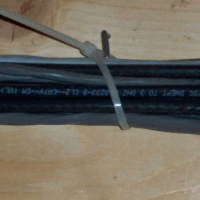
After the electrical box is installed and all of the wires are pulled through, use some expanding foam to fill the holes in the electrical box to insulate it.
Insulated Electrical Box 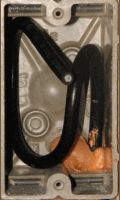
Sometimes these engineered joists are used instead of 2x10's or 2x12's. These joists are stiffer and quieter than conventional lumber. Engineered joists CANNOT be notched. Instead you must drill holes through the center of the joist. Some take pre-fabricated punch outs so that you don't take to drill. if y'all practise drill your own hole, make certain information technology is at least 6" away from the cease of the joist.
Engineered I Beam Joist 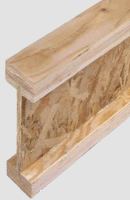
Oversized engineered beams are rarely used in homes except when special conditions crave information technology. Some types of these beams tin be drilled through and some cannot. The safest bet is to never notch or drill through a LVL Engineered Beam.
Laminated Veneer Lumber - Engineered Axle or HeaderJoist 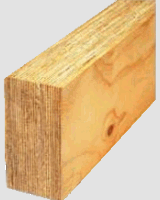
Aluminum studs should non be notched or drilled through. Instead use the pre-cut holes in the studs to run your wires. The premade holes shouldn't take whatsoever abrupt edges. If the edges are sharp and there is no grommet covering the opening, and then you will have to get your own or run your wire within metal conduit.
Aluminum Framing 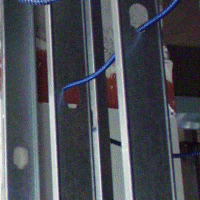
Source: https://www.structuredhomewiring.com/Wiring/SampleWireRunWithPhotos/

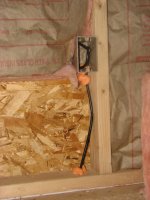
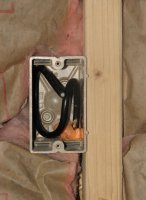
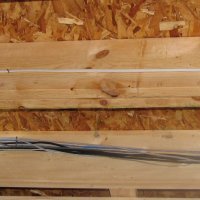
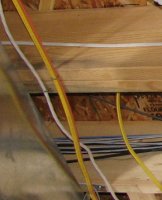
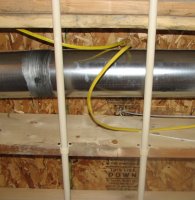
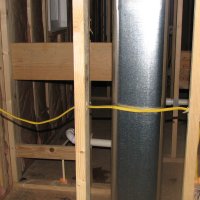
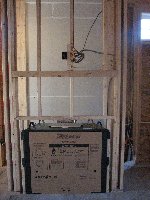
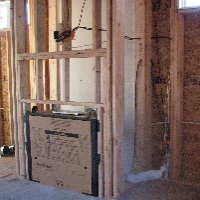

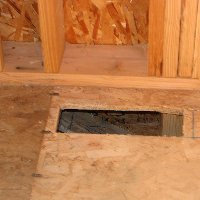
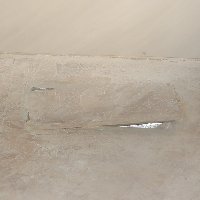
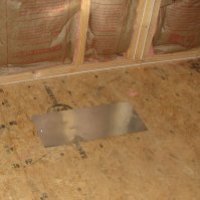
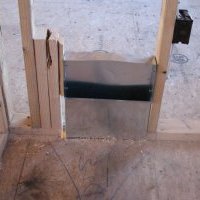
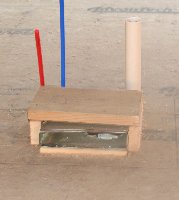

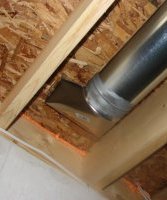
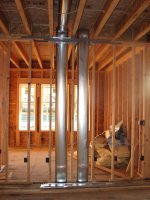
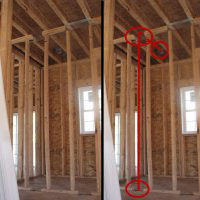
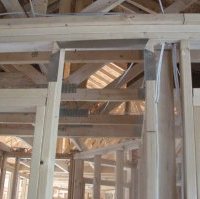
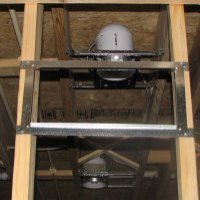
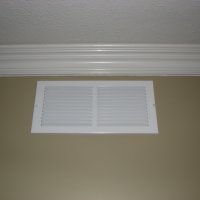
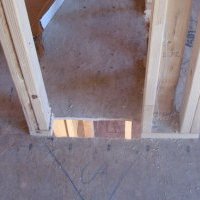
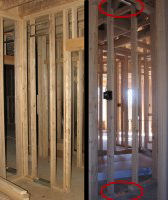
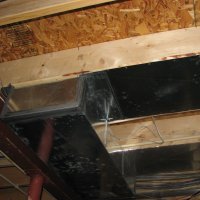
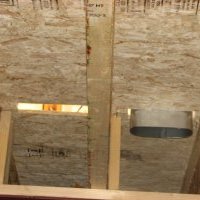
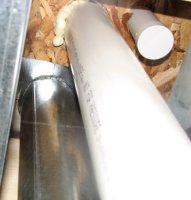
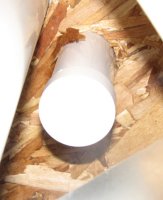

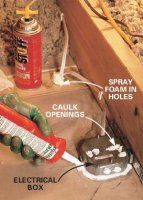
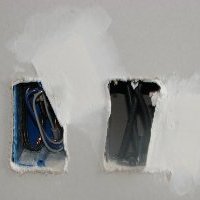
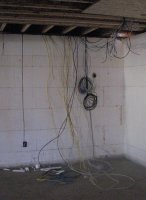
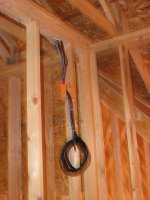
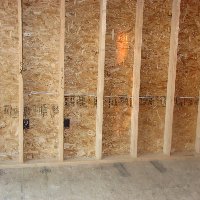
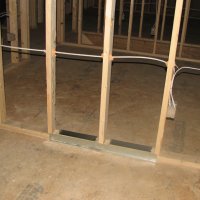
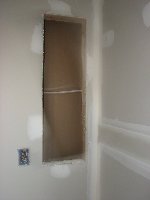
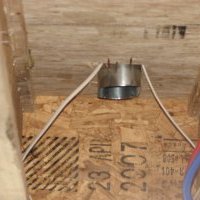
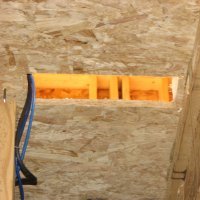
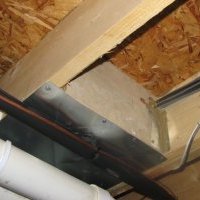
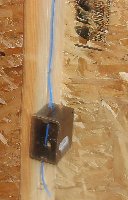
0 Response to "what to do about a wire under a floor joist"
Postar um comentário